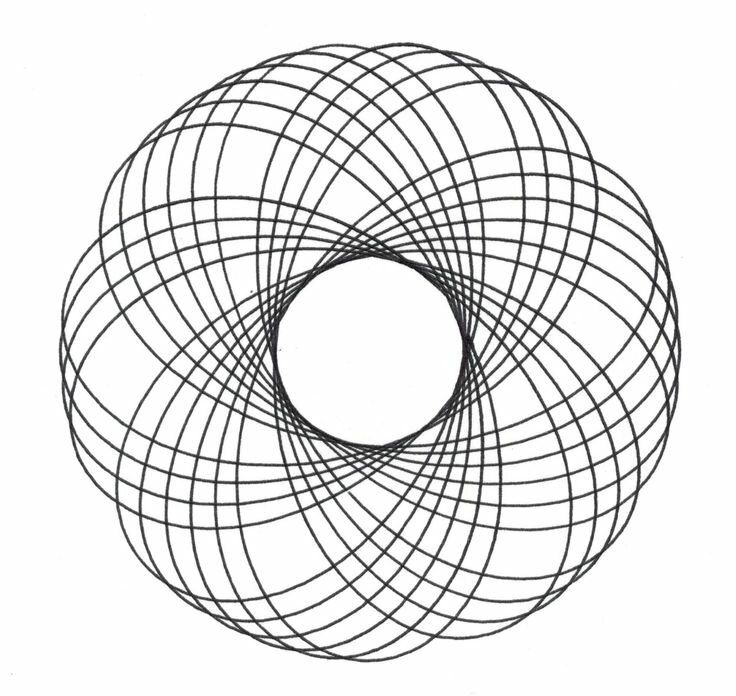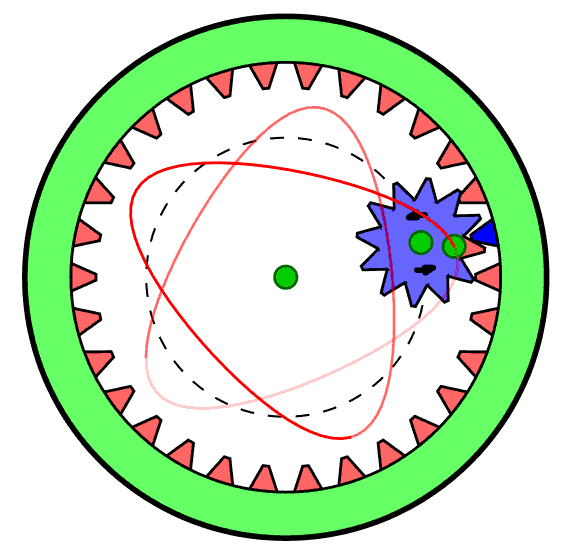Natural vs Reverse Turns: Part 1
The Big and Little Circles
25 May 2016
Natural and Reverse differ in so many ways, and not understanding the differences between them cause problems for dancers of every level. It would be impossible to cover them all in one article, so this article will focus on one of the differences between them: the big and little circles. Thinking about this neat little trick can help make your Natural and Reverse Turns easier, smoother, and more powerful.
Circles Explained
When you stand in dance position with your partner, your feet should be about 6-12 inches away from your partner's feet. From there, your bodies should angle toward each other until you connect at your centres. From there, your bodies should angle away from each other until your heads are farther apart. This results in a pyramid shape from the feet to the centre, giving you comfort and stability, and a blossoming flower shape from the centre to the heads, giving you beauty and counterbalance.
If you stand in this position, there is a point right between both of your centres which is known as the common centre, i.e. the centre of balance for the couple as a whole. Imagine that you start to spin clockwise around that common centre, but without moving down the floor in any direction. In this case, since your heads are at some distance from the common centre, they rotate around the common centre in a large circle. On the other hand, each dancer's individual centre is very close to the common centre, and so they rotate around the common centre in a little circle.

Now imagine that by some alien levitation technology, the Lady's head were held in one place in the room, while her body and the Man, still in dance position, rotated clockwise around her head. Now her head is the centre of rotation, and her body is rotating around that central point in a larger circle. The Man's centre is connected to the Lady's centre, and so his body is going around her head, but his head is very, very far from her head, and so his head feels like his head is travelling in a huge circle, compared to his body. For that reason, in this instance, the Lady will feel that her head is rotating in a little circle and her body in a big circle, but the Man will feel his body is rotating around the centre in a little circle and his head in a big circle.
Whenever you and your partner rotate together, each of you will always feel that there are two circles, a big circle and a little circle. Your centre will follow one, and your headweight will follow the other.
When we talk about figures in dance, though, there is a slight difference. Most rotational figures travel progressively, as well as rotate. Because of this, it isn't exactly a circle that is created, so much as a looping pattern, kind of like a Spirograph, shown in the picture below. If you don't know what that is, you must have had a very sad childhood.

Nevertheless, it helps to think of them like circles for simplicity.
Half Natural Moving Forward
For this, we are looking at the front half of a Waltz Natural Turn. That is to say, steps 1-3 of a Natural Turn as the Man (or steps 4-6 as a Lady).
As you step forward and rotate to the right, your headweight is to the left, on the outside of the turn, and your centre is rotating strongly to the right with CBM toward the inside of the turn. This means that as you rotate, you should feel that your centre travels along the little circle, and your head is travelling along the big circle. Maintaining this will give a large swinging action to your Natural Turn, and allow your headweight to counterbalance your partner's effectively.
Half Natural Moving Back
For this, we are looking at the back half of a Waltz Natural Turn. That is to say, steps 4-6 of a Natural Turn as the Man (or steps 1-3 as a Lady).
As you step back and rotate to the right, your headweight is to the left, and your partner is the one travelling the distance around you. This is the example given above, where the Lady's head stayed in one place. In this instance, you should feel that your centre travels along the big circle, and your head is travelling around the little circle (or almost in place). Doing this will allow your partner to pass you more easily, and maintain counterbalance.
Half Reverse Moving Forward
For this, we are looking at the front half of a Waltz Reverse Turn. That is to say, steps 1-3 of a Reverse Turn as the Man (or steps 4-6 as a Lady).
When dealing with Reverse Turns, realize that they are different, because each partner is extended to the left, and that offset must be maintained. When you step forward and turn to the left, your headweight is toward the centre of the turn and should always continue reaching toward the centre of the turn. Therefore, your head should feel that it is travelling along the little circle. Your centre, on the other hand, needs to travel around your partner, and you should feel that it travels along the big circle. Doing this will allow you to get through your Reverse Turns more easily, without distorting your positioning and losing offset.
Half Reverse Moving Back
For this, we are looking at the back half of a Waltz Reverse Turn. That is to say, steps 4-6 of a Reverse Turn as the Man (or steps 1-3 as a Lady).
As you step back and rotate to the left, your headweight, being to the left, will be on the outside of the turn. Therefore, you should feel that your head travels along the big circle. Your centre travels along the little circle here, because it is on the inside of the turn. Paying particular attention to keep the headweight on the big circle will allow for power in the Reverse Turns.
Other Figures
This is true of all Natural and Reverse Figures in all the Standard Dances. In the Tango Natural Twist Turn, the Waltz Double Reverse Spin, the Quickstep Running Right Turn, or the Foxtrot Closed Impetus, the, the same rules apply as discussed above. It just depends on whether you are going forward or back, and dancing a Natural or Reverse Figure. This is just one way that Natural and Reverse Turns differ. Stay tuned for further differences in future articles!